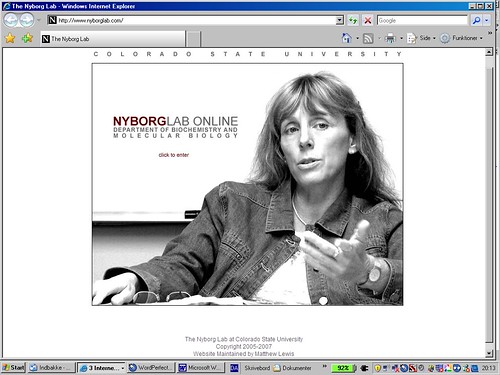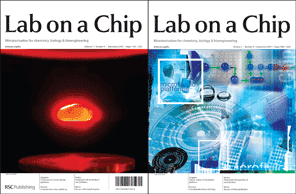Our collection and display activities are again and again putting the issue of aesthetics on the medical museum agenda. How do we handle the ‘aesthetic dimension’ of medical objects in curatorial practices?
I came to think of this question again when I read yet another laudatory review of Sansernes Hospital [Hospital of the Senses] by renowned Danish architect journal editor Kim Dirckinck-Holmfeld and professor Lars Heslet, former head of the intensive care unit at the Danish National Hospital (Rigshospitalet), published by the Danish Architectural Press a few weeks ago.
The basic claim of this lavishly illustrated coffee-table format book is that it is high time to throw out the predominant brutalist functionalist architecture that has dominated hospital environments of the last 40-50 years. It should be substituted, the authors suggest, with a new kind of aesthetically more pleasing design concept. One that can contribute to the well-being of both patients and employees.
And it’s not just a dream: Over the last ten years Lars Heslet has raised millions of Danish crowns from private foundations to put artwork in the wards of the intensive care unit at The National Hospital and to change the clinical soundscape with the help of music and the sounds of nature.
‘Riget’ (world famous through Lars von Trier’s movie The Kingdom) is perhaps not the worst hospital I’ve seen in the brutalist category. Even so, the authors have a strong case and they are thereby joining a growing international movement against functionalist hospital architecture. This is a frequently discussed topic on the web (for example here) and is a political issue even in some developing countries: “In the last decade healthcare architecture has undergone a dramatic shift from crisis intervention to healthcare maintenance, by rejecting the sterile look of medical edifices and creating a more humane, warm ambience for the patient,” writes a Mumbai-based commentator in the Indian Healthcare Mangagement newspaper in 2000.
Common sense speaks in favour of the authors’ proposal (there even seems to exist some clinical studies that support the claim that aesthetically pleasing hospital design has positive therapeutic effects). So I’m all in favour, of course.
That said, however, the campaign for aesthetically pleasing hospital settings raises the interesting issue of what one might understand by the ‘aesthetic dimension’ in a hospital context. Most of what I have read on the topic is about changing the physical spaces of the hospital (wards, hallways, cafeterias etc.) by adding aesthetically pleasing artistic elements. That is, the ‘aesthetic dimension’ is usually thought of in terms of extra-clinical architectural elements and artworks (paintings, soothing music etc.), but doesn’t really enter the core of clinical practice itself.
Again, I’m not against nicer hospital buildings, tranquil hospital gardens and beautiful artworks. After all, I’d prefer lying in my hospital bed contemplating a ceiling that looks like that by Michaelangelo in the Sistine Chapel rather than staring on a dirty ventilation system. But this widely spread understanding of hospital aesthetics — as a change in the hospital environment — distracts from a more inclusive view of aesthetics as a pervasive dimension of all clinical structures, objects and practices.
By restricting our interest to the aesthetic power of hospital spaces, for example by means of new architectural structures and pleasing artworks, one risks missing the fact that all everyday clinical objects and practices –the ultrasound apparatus, the defibrillator, the syringes and tubes, the bed, the linen, the bodies and gestures of the doctors and nurses, and so on — have intrinsic aesthetic powers.
All these things have aesthetic appearances that relate to our senses — not just the visual, of course, but all the senses: the taste of prescription drugs, the smell from the coffee wagon, the sounds of monitors and beepers, the tactile experience of the bed cover, the cold sensation of the exploration jelly, the choreography of consultant as he/she enters the ward, the gory feeling of having a palpating finger inside one of your body openings, and so forth.
In other words, every detail of the clinic provides a firework of aesthetic impressions — even without a single piece of art on the walls. True, the sensuous qualities of the hospital can be vastly improved by focusing on the aesthetics of the environment — on architectural extras, paintings and glass mosaics — but one shouldn’t forget that the most overwhelming aesthetic dimension of the hospital lies in the nitty-gritty details of everyday clinical objects and practices.
So, to get back to the issue of handling the ‘aesthetic dimension’ of medical objects in curatorial practices, I believe that a heightened awareness, among curators, of the ubiquitous aesthetic dimension of everyday clinical objects and practices will have consequences for the way these objects are turned into museum objects after they have been cassated from hospitals.
Why? Because 1) acquiring, curating and registrating an always-already aesthetic object is a very different museological practice than 2) acquiring, curating and registrating an alleged ‘non-aesthetic’ object and later attributing aesthetic qualities to it, for example when it is put on display.
If (as I suggest) all clinical objects and practices are aesthetically permeated, they will remain so throughout all steps in the curatorial process, and not only when (or if) the exhibition curator decides to ascribe aesthetic qualities to them.



